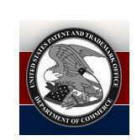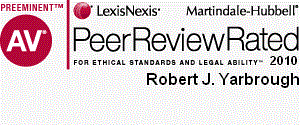Newsletter Issue 62 - April 2014
In this issue:
Artist's rights organizations
Trademark secrecy
Provisional patent applications
Ask Dr. Copyright ...
Dear Doc:
I write the songs that make the whole world sing. Unfortunately,
with all that songwriting, I really don't have the time to listen to
every radio station that plays my songs, every online store that
sells them, and every band, chorus, glee club, and lounge act that
covers them so that I can collect royalties. I have heard that there
are organizations that will do all of that for me, and even sue
people who don't pay up. What gives? I thought that "trolls" were
the bad guys, but this sounds like just what us musicians need in
order to make a living.
Barry M.
Dear BM:
The organizations you're referring to are called "Artists' Rights
Organizations" (AROs) and there are three big ones: Broadcast Music
Inc. (BMI), American Society of Composers, Authors and Publishers
(ASCAP) and the Harry Fox Agency (HFA). Each one of these companies
is a nonprofit that licenses, collects, and distributes royalties on
behalf of musical copyright owners. BMI and ASCAP license public
performance rights to venues such as concert halls, bars,
restaurants, stores, etc.. HFA licenses "mechanical" rights, which
include the right to make CDs, records, tapes, and certain digital
products. In addition, there are more than 200 similar organizations
worldwide, and many have reciprocal agreements with one or more of
the US-based AROs. Not to confuse you more, but record labels also
license rights, and they have their own organization, the Recording
Industry Association of America (RIAA).
It's interesting to note that none of these companies writes any
music at all! Nor do they arrange it or perform it. They just
collect the royalties, and when someone refuses to pay up, they
bring law suits, relying on the Copyright Law (17 U.S.C. §101, et
seq.) which provides, among other things, that they can collect
attorneys' fees, and ask for statutory damages of up to $150,000 per
song played or copied. But, I hear you shout, "Last month, Doc, you
told us that this is pretty much exactly what companies that are
being called "patent trolls" do with patented inventions! They don't
invent widgets, and they don't make the widgets...they just offer to
license patent rights, and when someone refuses to pay the royalty,
they bring a law suit in which they demand a 'reasonable royalty'".
Yep...exactly! So there you have it. AROs are respected for the work
that they do to help musicians make a living by licensing rights,
collecting royalties, paying artists, and policing the use of the
rights by using the legal system. They are important because, to
quote the ASCAP website, "We know that there are many steps between
creation and compensation. A music creator is like a small business,
and we exist to ensure that ASCAP members are paid promptly and
fairly when their compositions are performed publicly." Now, to
quote one "patent troll" website, "Patent licensing can be an
effective and efficient way to maximize the profit potential of a
patent. A patent license agreement grants a third-party user of the
invention (an infringer) permission to practice the patented
invention in exchange for remuneration."
So there you have it. Patent trolls: BAD. Copyright trolls: GOOD.
Go figure!
If you have a question about how to license your intellectual
property, give one of the attorneys at LW&H a call. They're not
trolls, but they do understand how to help creative people protect
and profit from their creations, whether they are widgets, music, or
some other wonderful new thing that will be the next hit.
Keeping the Cat In the Bag When Filing a Trademark Application
One of the potential down sides of filing a trademark application
with the United States Patent and Trademark Office is that the
application, including the identity of the owner, is of public
record, accessible to anybody.
If secrecy is important to your company's marketing strategy then
filing a trademark application is not an act to be taken lightly.
So, if you are, say, Apple Computer, and you rely upon the
anticipation of the product announcement to build up market hype and
eventually sales, you will need to keep your trademark filings
secret until the product announcement. How do you do that without
spilling the beans?
The tried technique for maintaining secrecy is to create a dummy
corporation that no one will recognize for filing your trademark
applications. Once the need for secrecy evaporates, the dummy
corporation assigns the trademark to its true owner. Apple, in
fact, uses this technique.
AppleInsider recently reported that a
Delaware corporation called BrightFlash USA LLC recently filed a
host of trademark applications for the iWatch trademark. (Okay,
everybody knows or thinks they know that Apple will be releasing a
new product called the iWatch so what's the point of keeping it
secret? I guess it's because nobody knows for sure.)
It's not completely clear whether BrightFlash is actually an Apple
Computer surrogate, however, numerous trademark filings for iWatch
in the United States, the United Kingdom, the European Union,
Australia, and Denmark, strongly suggest that Apple may be behind
the trademark applications. AppleInsider also reported that there
were numerous applications filed by BrightFlash for the iWatch
trademark in smaller countries. Just an interesting tidbit from
those who monitor trademark filings.
Provisional Patent Applications - File Early and Often
A provisional patent application is a temporary application that
provides patent-pending status for one year. The provisional
application can be a relatively low-cost way to preserve your patent
rights while you develop your invention. The protection offered by
a provisional patent application is only as good as the information
contained in the application and only addresses the invention as
disclosed in the application. The provisional application must
include enough information in the specification (the narrative part
of the application) and the drawings so that a person who is
knowledgeable in the technical field of the invention can make and
use the invention.
To have any continuing value, your provisional application must be
followed within one year by a full U.S. non-provisional (utility)
patent application. If the invention is one for which you will seek
international patent protection, your international patent
application(s) also must be filed within one year of the provisional
filing date.
If you develop improvements to your invention while your provisional
application is pending, the improvements are not protected. What
to do? File another provisional application addressed to the
improvements.

